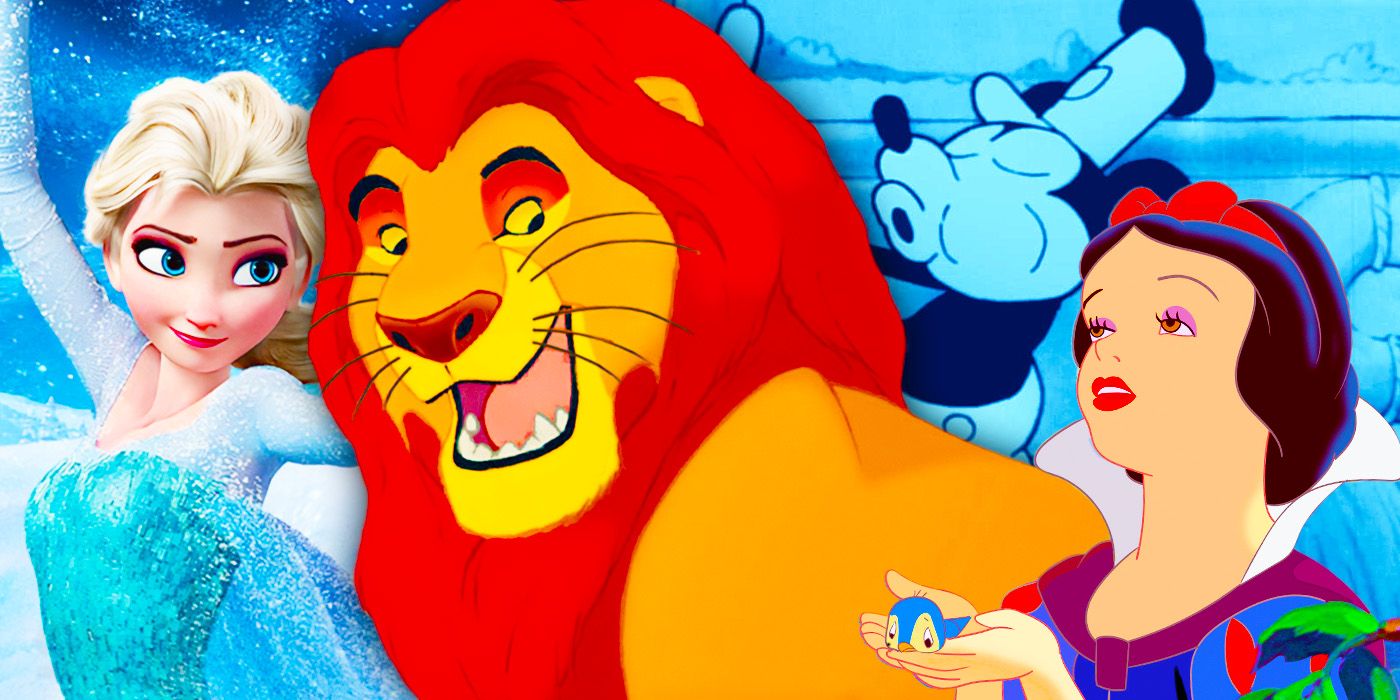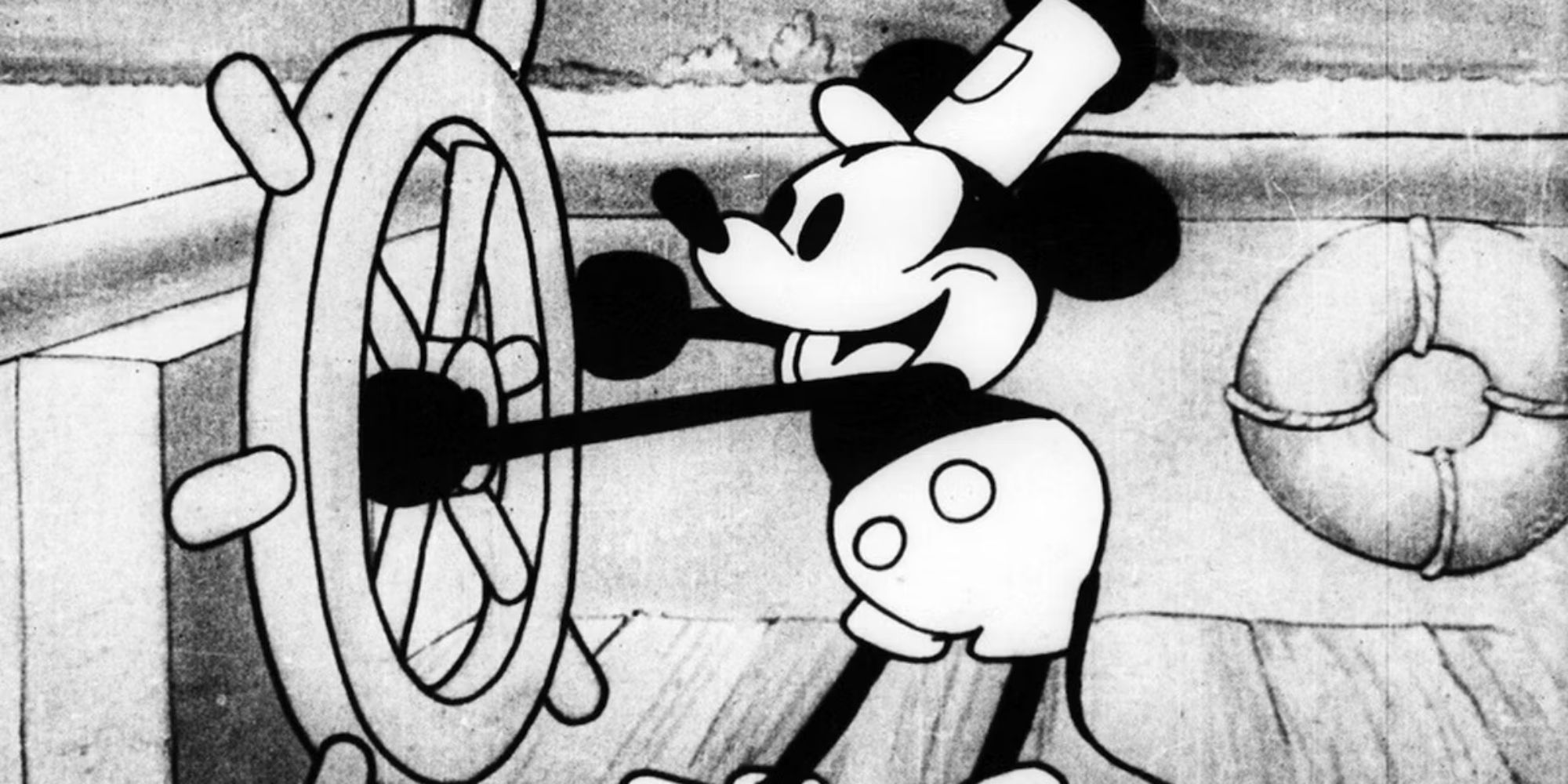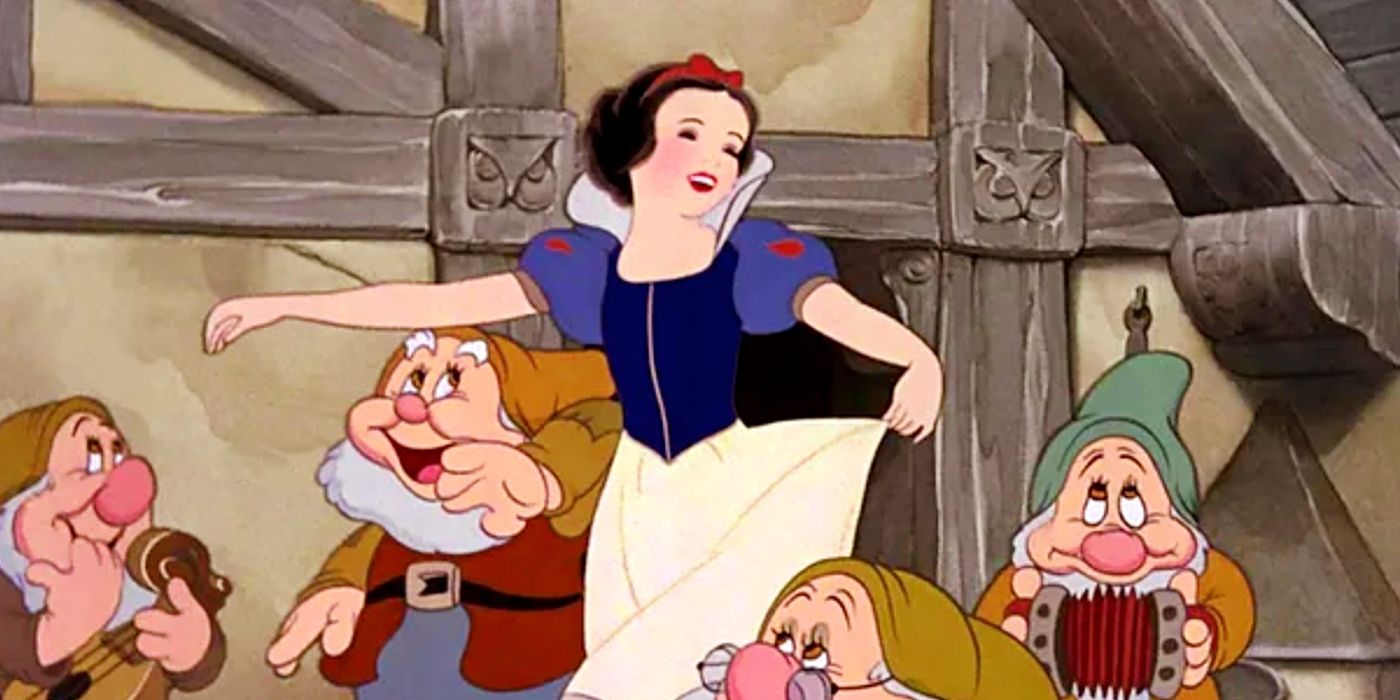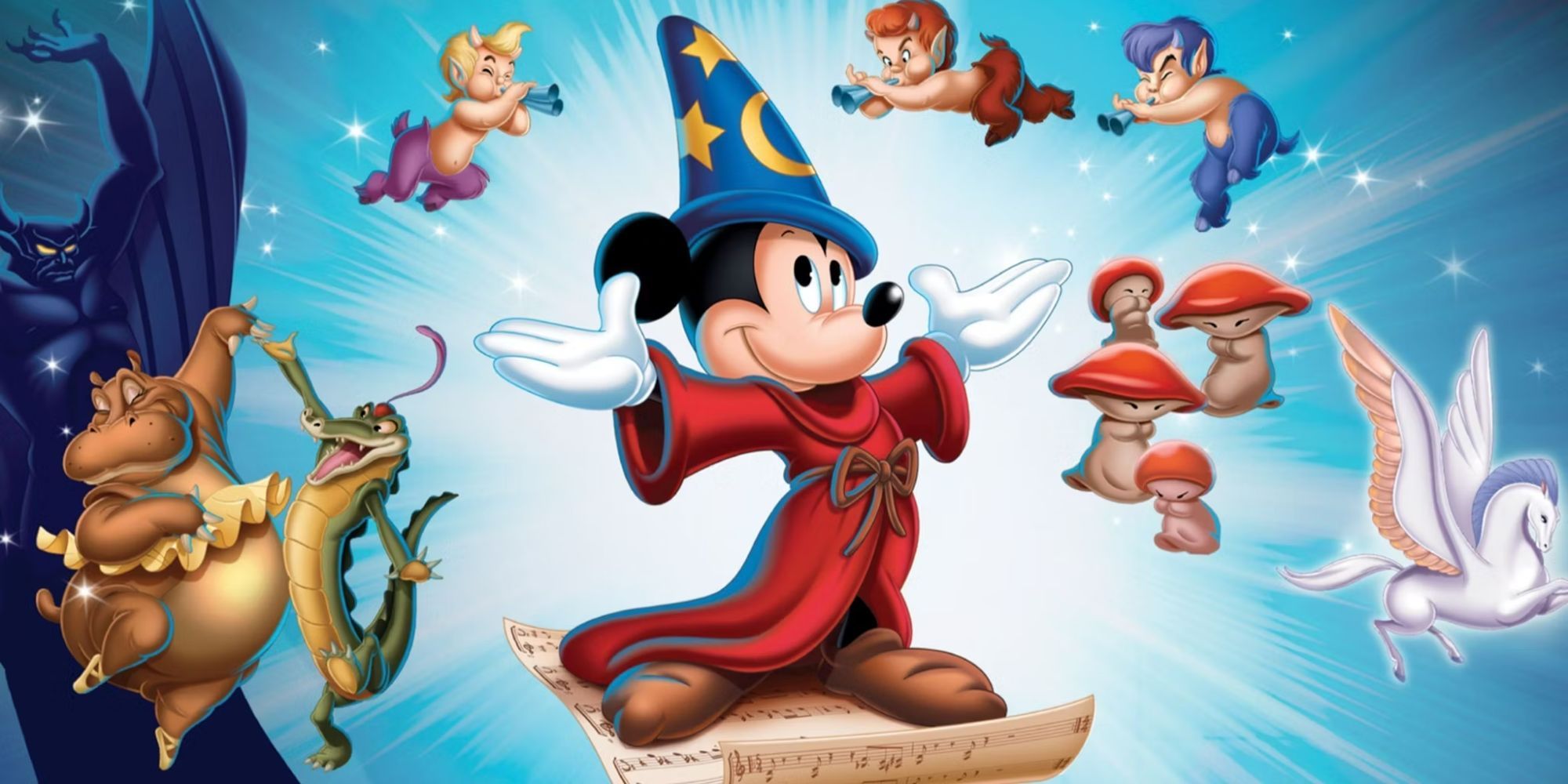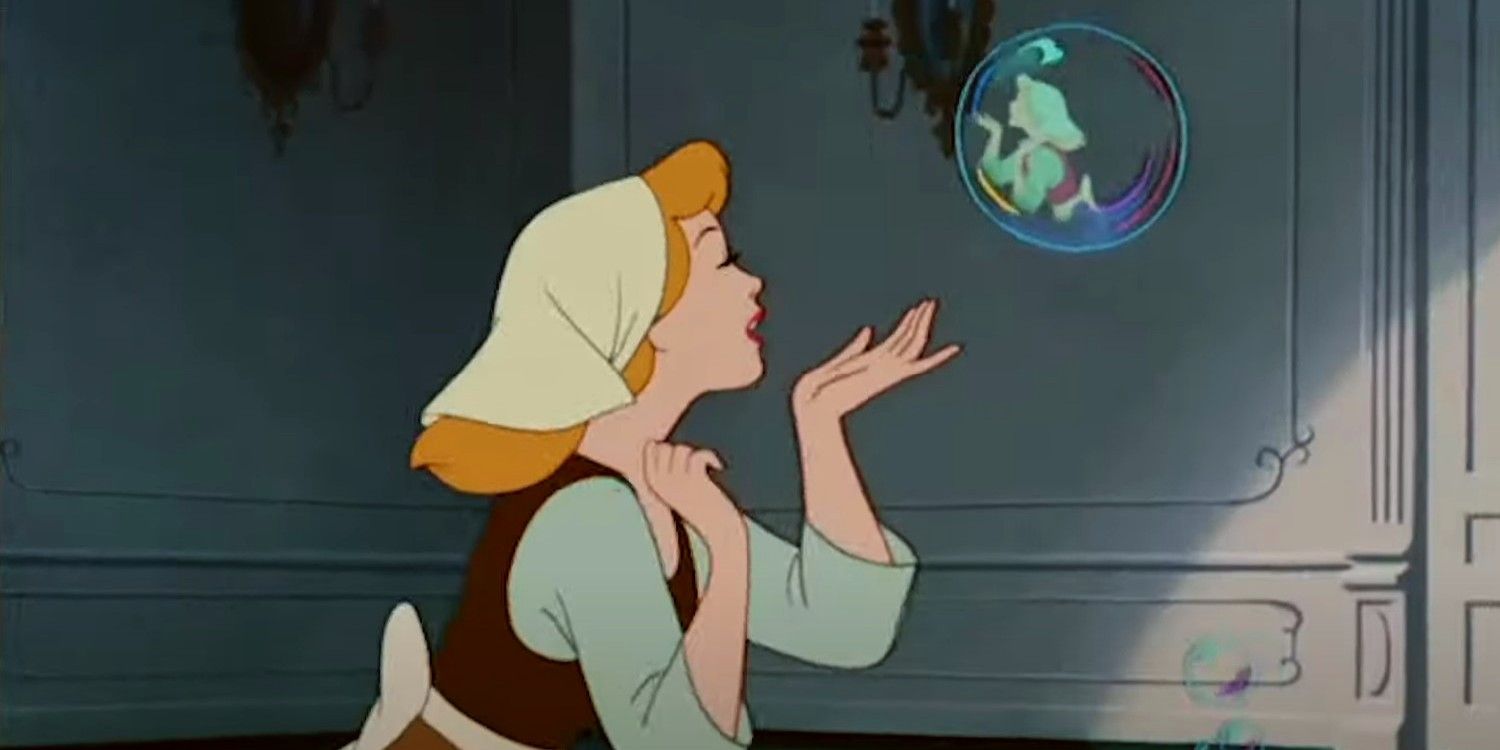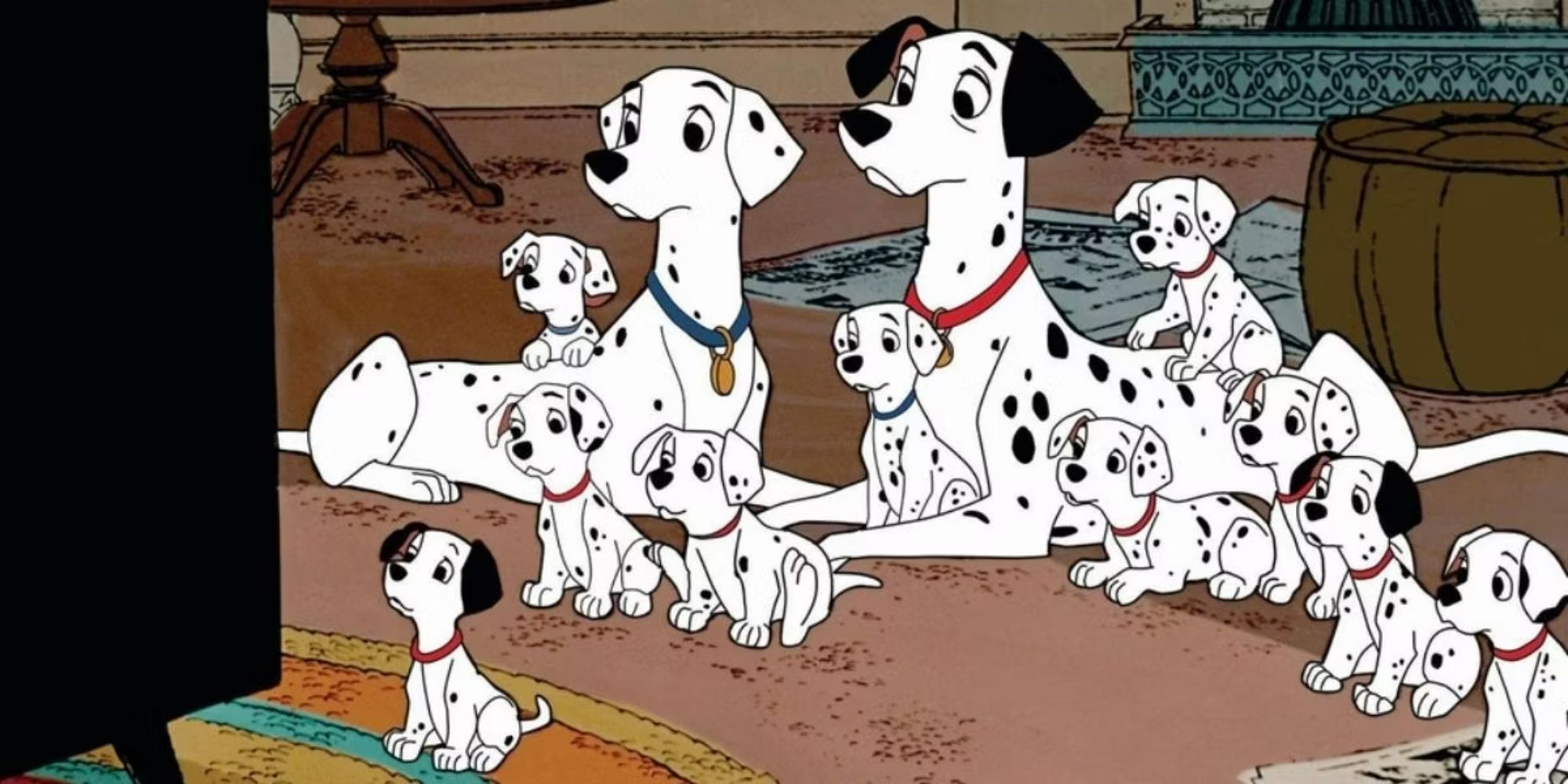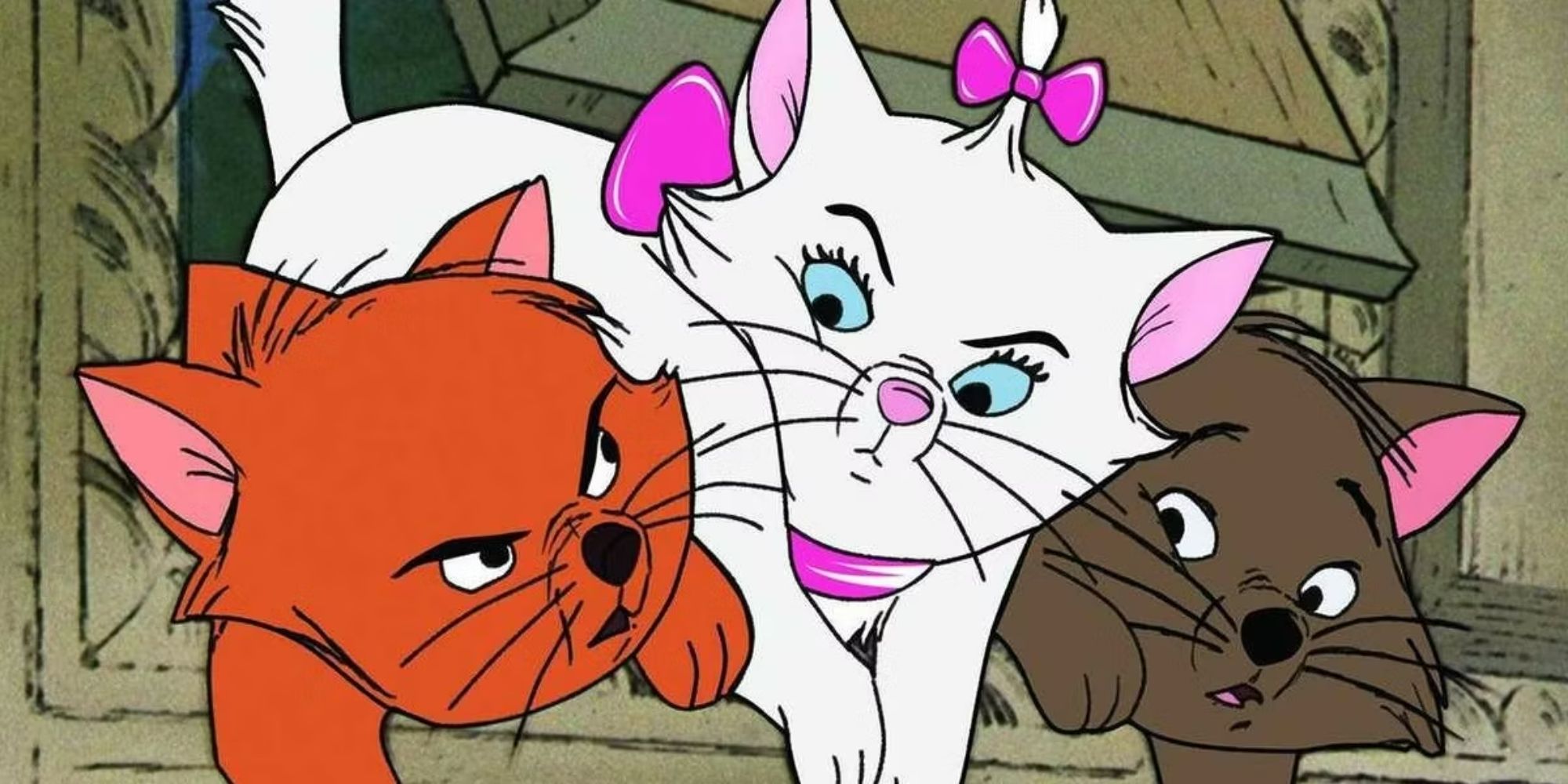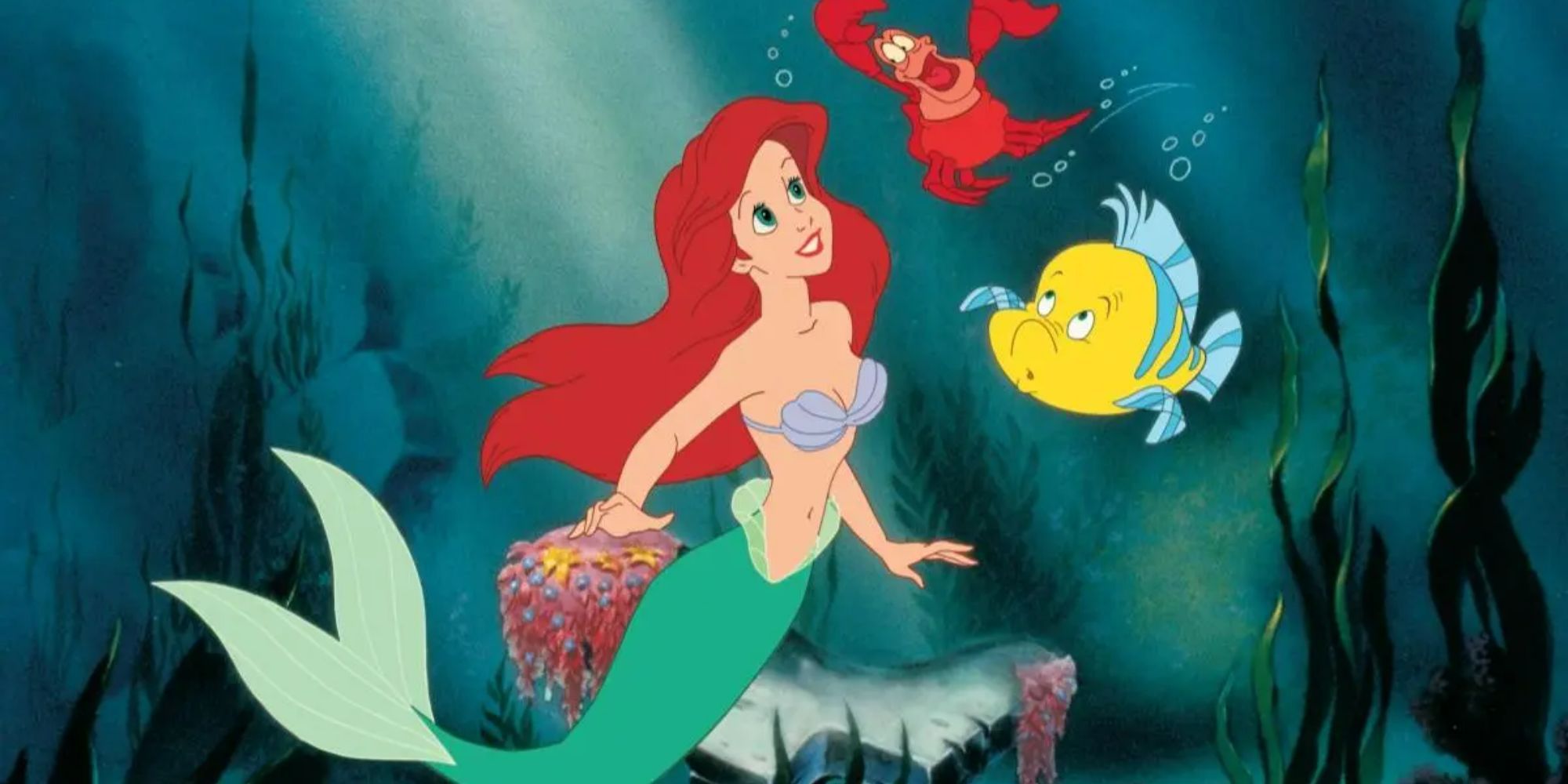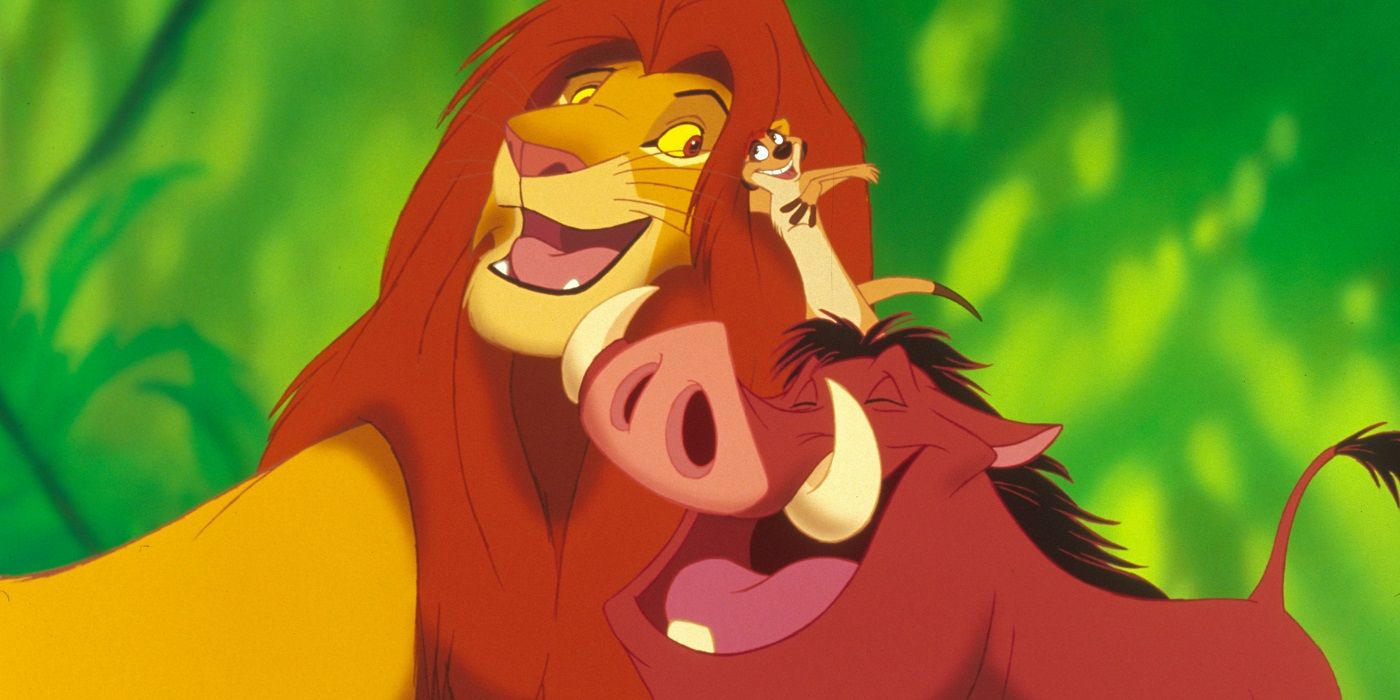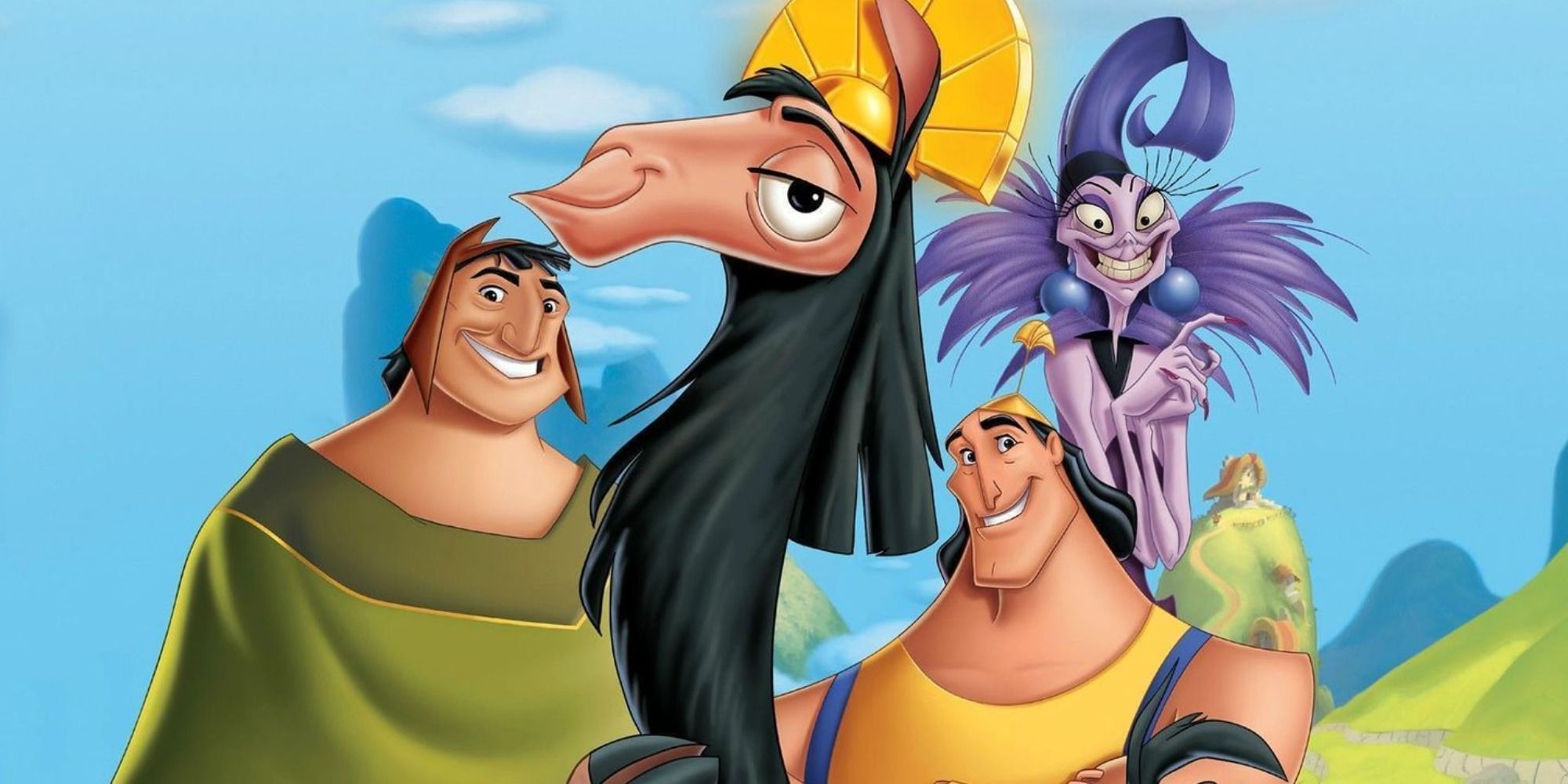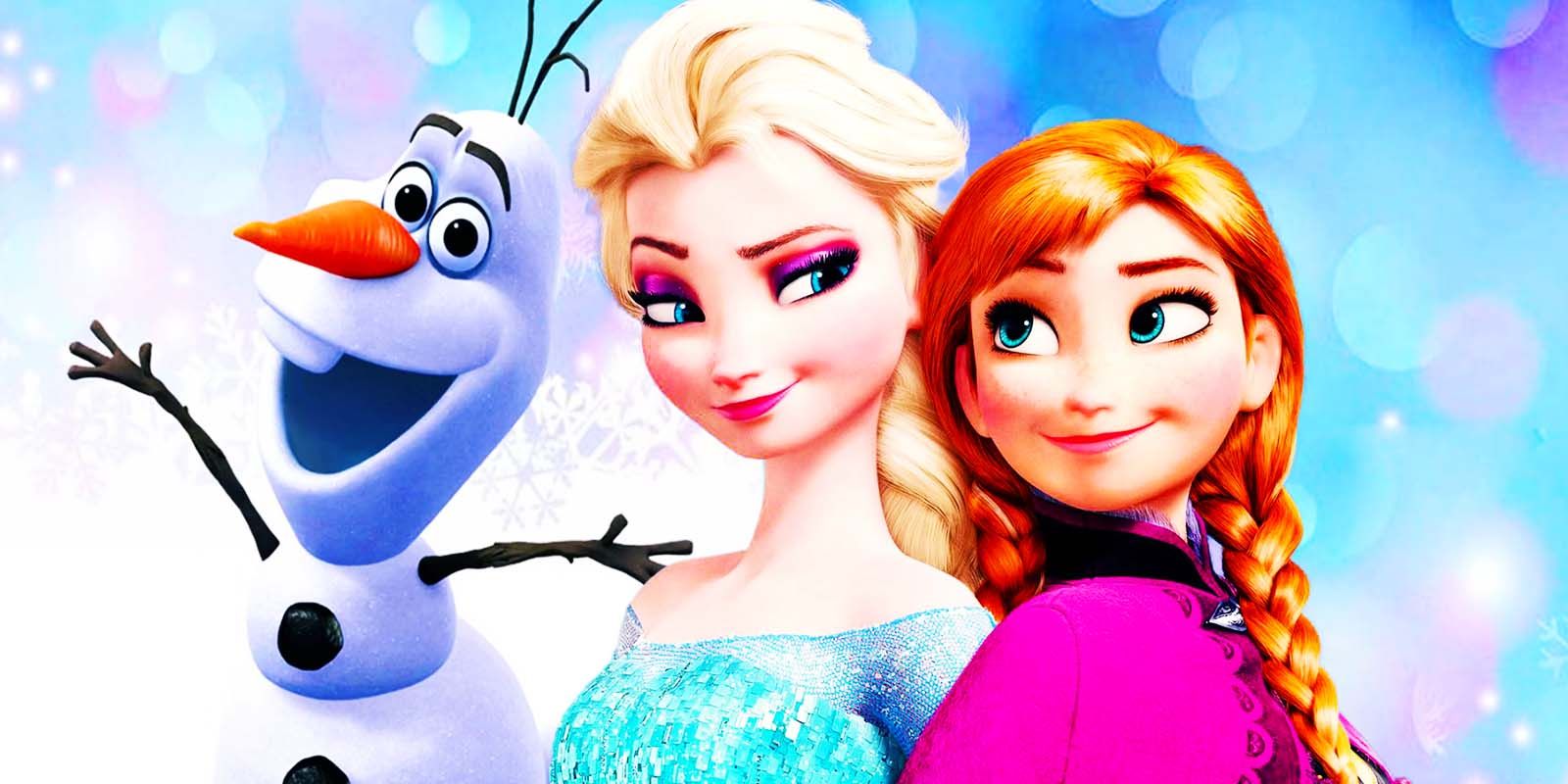Summary
- Disney has a rich history spanning 100 years, with each decade marked by standout films.
- From black-and-white short films to full-feature CGI masterpieces, Disney has maintained its unmistakable charm throughout the years.
- Disney has had significant milestones, such as the introduction of synchronized sound, the first full-length cel animation, and the release of iconic princess-centered films. The studio continues to innovate and produce promising films for children's entertainment in its second century.
Disney turns 100 years old in 2023, and each decade since the studio's first movie is marked by a film that stood out among the rest. The House of Mouse is easily the most celebrated movie studio regarding children's animation, and it earned this reputation by reliably releasing memorable projects. Of course, over the years, the flavor of these films has changed significantly. What started as black-and-white short films have evolved into full-feature CGI masterpieces. Still, there is something unmistakable about a Disney film, regardless of the decade.
The birth of Disney, called initially Disney Brothers Studio, came with Walt Disney's first film, Alice's Wonderland, on October 16th, 1923. The short film featured a live-action Alice who found her way into an entirely animated dream world. It was truly innovative storytelling, and its success allowed the Disney series of short films, the Alice Comedies. No one could have known what Disney would become or the further innovations that the studio would make in the world of children's entertainment. Year after year, Walt Disney and his company released phenomenal films, many of which are still celebrated even after 100 years.
10 1923-1929: Mickey Mouse - Steamboat Willie (1928)
Though Alice's Wonderland was Disney's first animated film, Steamboat Willie is more widely remembered today. Walt Disney believed synchronized sound was the future of animation and had been determined to be among those who produced the first few. Of course, he succeeded, and Steamboat Willie is still considered the grandfather of the synchronized soundtrack. Moreover, it meant the debut of Disney's beloved Mickey and Minnie Mouse.
9 1930-1939: Snow White & The Seven Dwarves (1937)
Another massive step forward in the world of animation, Snow White and the Seven Dwarves, was the first full-length cel animation in movie history. This was an enormous risk for Disney, costing a whopping $1.5 million before the project was completed. Had it failed, it would have easily meant the end of the House of Mouse, regardless of the success of past films. Thankfully, the world was wowed by the breathtaking artwork, heartwarming story, and memorable music, and the expectations for animation were changed forever.
8 1940-1949: Fantasia (1940)
By the 1940s, interest in Mickey Mouse had begun to fall, so Disney started developing new and improved shorts to draw audiences back in again. However, the kind of animation they had come to expect from projects like Snow White was expensive, which made justifying another short film rather tricky. This inspired Disney to combine his shorts into a single feature film. Fantasia is a spectacle of animation, entirely dependent on the visually thrilling elements of fantasy that live-action couldn't pull off. The 1940s saw the release of memorable films like Pinocchio and Bambi, but Fantasia was on a different level and raked in the cash at the box office.
7 1950-1959: Cinderella (1950)
Several great Disney films were released in the 1950s. Lady and the Tramp, Peter Pan, and several Donald Duck movies have all stood the test of time. Still, the true trophy of the '50s was Disney's first princess-centered movie since Snow White—Cinderella. In a big way, this movie left an even larger impact on the company than its princess predecessor. The story of the cinder girl meant the introduction of the "dreams do come true" mantra that Disney is known for. By the end of the 1950s, Disney had three princess movies under its belt, which, of course, was only the beginning.
6 1960-1969: One Hundred & One Dalmations (1961)
By the 1960s, Disney had begun to head in several directions. Disneyland was opened, allowing the company to bring in money outside of films and television. Additionally, there were several live-action Disney movies that performed well at the box office. In fact, they performed so well that full-feature animation movies were starting to look like a poor return on investment since the cost associated with such intricate cel artwork made it challenging to make money back at the box office. However, this all turned around with One Hundred and One Dalmatians, which managed $14 million domestic gross. This began the trend of films led by adorable talking animals.
5 1970-1979: The Aristocats (1970)
The 1970s saw the release of several more talking animal movies, such as The Rescuers and Robin Hood, both of which performed well with audiences. Still, these films lacked something that Disney's last successes had deemed entirely necessary—some great musical numbers. This may be why The Aristocats managed some impressive box office numbers for the time. Between the adorable kittens and songs like "Everybody Wants to be a Cat." the film checks all the boxes. It would be another decade before Disney truly reestablished itself with some massive hits, but Aristocats still did something delightful.
4 1980-1989: The Little Mermaid (1989)
Disney really leaned into live-action in the 1980s, and a fairy-tale-inspired animated film hadn't come along in years. However, at the end of the decade, the House of Mouse released the original The Little Mermaid, and everything changed. She was a brand new type of princess—outspoken, curious, and never far from her trusty animal sidekick. It would be another decade before the Disney Princess franchise officially got its start, but Ariel served as the revolution that made such a thing possible. Audiences, especially young girls, were in love, and Disney would never be the same again.
3 1990-1999: The Lion King (1994)
The 1990s was a big decade for Disney. The Littler Mermaid served as the beginning of a renaissance, and other princess movies like Aladdin, Beauty and the Beast, and Mulan were released to fantastic reception in the following years. Of course, these films were aimed at young female audiences, so the House of Mouse developed something that would be appealing to audiences of all genders and ages. If The Little Mermaid was a success, then The Lione King was an absolute triumph. It managed an unheard-of $763 million worldwide gross on its initial release, something that wouldn't be topped by another animated film until decades later.
2 2000-2009: The Emperor’s New Groove (2000)
The 2000s saw another shift for Disney, as the focus went to live-action movies like the Pirates of the Caribbean movies and the start of what would become the Marvel Cinematic Universe. The animated movies felt a little different too, with the writing done entirely with kids in mind. This is where films like The Emperor's New Groove came in. Outrageously silly and full of a sarcastic, self-aware, fourth-wall-breaking kind of comedy, the movie struck a chord with young audiences. It was a sort of unexpected masterpiece and made Disney $169 million at the global box office.
1 2010-2023: Frozen (2013)
The 2010s saw another shift in Disney animation. Though Pixar had been using CGI animation for over a decade, Disney's mainstream releases had adhered to the traditional animation that Walt Disney had been so proud of. However, Tangled (2010) revolutionized the company's standard art style as the first entirely CGI 3D-animated Princess movie. The budget ($260 million) is still considered one of the highest for an animated film, and though Tangled was considered a success, it barely made up for the costs. If Disney wanted to continue in this medium, it needed something with a more substantial impact.
A few years after Tangled, the House of Mouse pulled through with another 3D-animated Princess movie that again revolutionized the company—Frozen. It was their first non-Pixar movie to gross over $1 billion at the box office, and the fan reception and cultural impact were remarkable. The story completely diverted the tropes Disney had established with its past princess movies to the point that Frozen separated itself from the Disney Princess franchise. Frozen 2 (2019) was even more successful, which makes the promise for Frozen 3 no surprise.
Now, in the first few years of the 2020s, Disney is heading into its second century of movie-making. The films the studio is releasing may look significantly different than titles like Alice's Wonderland or Steamboat Willie, but they have just as much promise in the world of children's entertainment. Encanto, Raya and the Last Dragon, Strange World, as well as upcoming releases like Wish, all have the potential to be remembered as some of Disney's best—only another 100 years of Disney will tell.

